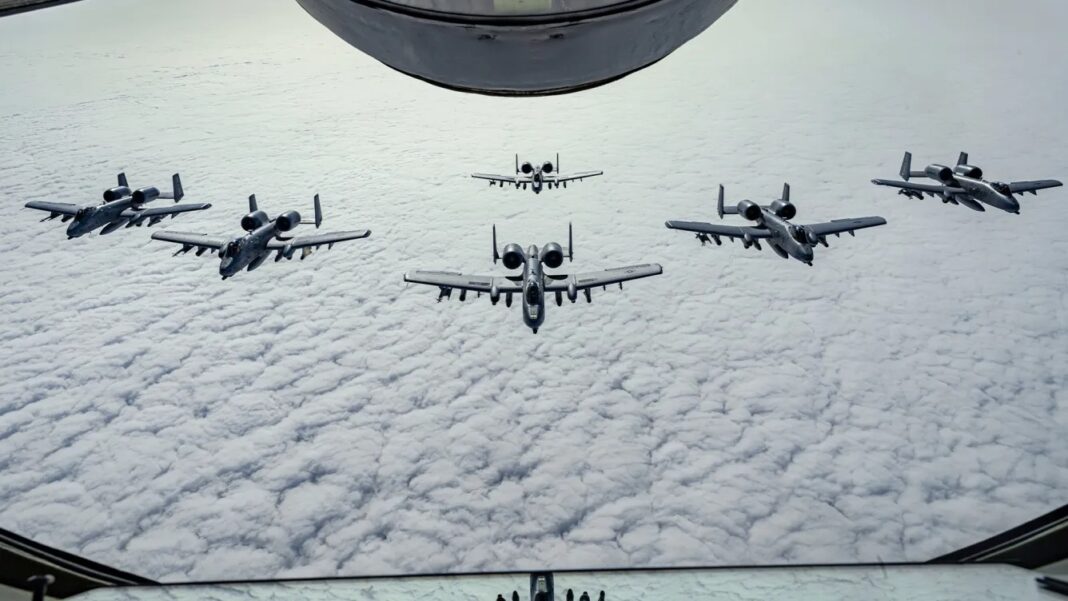From July 19-25, Japan and NATO members including Germany, France, and Spain plan to conduct their first-ever joint air combat exercise in the airspace surrounding Hokkaido, a northern Japanese island, seemingly causing unease in China.
Terming the move by Japan as the “latest action” to promote an “Asia-Pacific version of NATO,” Global Times, China’s state-backed tabloid daily, said Japan’s plan for joint military exercises with Germany, France, and Spain is clearly “orchestrated” by the United States.
The Japan Times, quoting the country’s Defense Minister Minoru Kihara, reported that a contingent of more than 30 military aircraft from Germany, France, and Spain will arrive in July to conduct a series of training exercises with the Air Self-Defense Force.
The Chinese daily, a mouthpiece of the Communist Party of China (CPC), said this exercise aims to integrate NATO military forces in the region and merge them with military forces of the U.S. and Japan to “demonstrate joint air combat capabilities.”
The air drills will be held in two parts: the ASDF will conduct air combat exercises with France in the airspace around Hyakuri Air Base in Ibaraki Prefecture on July 19-20, and with Germany and Spain in the airspace around Chitose Air Base in Hokkaido on July 22-25. The exercises aim to improve tactical skills and promote mutual understanding, according to Japan’s Defense Minister.
The theme of the forthcoming joint air exercise is “Free and Open Indo-Pacific,” suggesting Japan’s intention to create a strong deterrence against an assertive China in the region. This has put some Chinese analysts on edge, feeling that the long-distance rush of some NATO countries to carry out military exercises in the Indo-Pacific is not something that Beijing should ignore.
Japan will deploy four F-15 fighter jets and two F-2 fighter jets for the forthcoming joint air drills, while Germany is sending eight Eurofighter aircraft, three A400M transport aircraft, four A330 MRTT aerial refueling aircraft, and one A321 transport aircraft. France will deploy four Rafale fighter jets, three A400M transport aircraft, and three A330 MRTT aerial refueling aircraft. Spain will send four Eurofighter fighter jets and two A400M transport aircraft for the joint air drills.
In this first-ever Japan and NATO members’ joint air exercise, as many as 260 personnel from France, about 180 personnel from Germany, and around 150 personnel from Spain are expected to participate.
Lu Chao, a Senior Researcher at the Liaoning Academy of Social Sciences, a China-based think tank, told Global Times that NATO members want to stir up trouble in the region to ease pressure from ongoing conflicts in Ukraine and the Middle East.
This suggests that China does not want the Ukraine war to end, nor does it want Israel’s war against Hamas to conclude, as these two war theaters are keeping the U.S. and its European allies occupied, while draining their military and economic resources.
While the grinding Ukraine war and Middle East conflict have impacted the weapons stockpiles of the U.S. and its allies, this would not give China’s People’s Liberation Army a strategic advantage over its rivals. The U.S. and its European allies have expanded their defense industrial base to replenish their weapons stockpiles recently, according to a CNN report.
Europe has been smarter in this regard. To boost the competitiveness and readiness of the European Defense Industrial and Technological Base (EDTIB), the European Union rolled out a Defense Industrial Strategy in March 2024. This strategy, as per the Center for Strategic & International Studies (CSIS), is a leap forward in the EU’s ambition to become “ready for war” for the defense of its interests in the continent and beyond.
More ambitious is the U.S.’s Indo-Pacific strategy. Underscoring the fact that China maintains the world’s largest navy, with more than 370 ships and more missiles and personnel than America, Washington D.C. in August 2023 unveiled the ‘Replicator program.’ Under this program, the U.S. aims to operate thousands of autonomous platforms to counter China’s military. According to defense news portal The War Zone, the Replicator program will see the U.S. military operating counter-uncrewed aerial systems (c-UAS) and uncrewed surface vehicles (USVs) of various sizes and payloads.
On strategic turf, NATO, nudged by the U.S., has begun pivoting towards the Indo-Pacific. It has upgraded its ties with Japan and South Korea to a strategic partnership framework and has enhanced its engagement with Tokyo and Seoul in areas like climate change, information operations, and military intelligence sharing, cyber, space, and emerging and critical technologies.
Political engagement between Japan and NATO, and South Korea and the 32-country intergovernmental alliance, has also significantly increased recently. On July 9, Fumio Kishida will attend the NATO summit in Washington, marking the third consecutive year a Japanese Prime Minister will attend the summit. South Korean President Yoon Suk Yeol has also been invited to attend the forthcoming NATO summit in Washington. The South Korean President has already represented his country at the two previous NATO summits held in Spain in 2022 and Lithuania in 2023.
While China is not overly worried about South Korea’s growing engagement with NATO, the East Asian country is concerned about Japan. Since Japan continues to expand and develop its military capabilities, Tokyo’s increasing association with the U.S. and NATO could prove disastrous for peace in the region, some Chinese experts say.
In truth, enhanced activities by Japan, the U.S., and their close allies in the Indo-Pacific region have created a strong deterrence against China, which is aggressively pushing its expansionist designs around the South and East China Seas and the Taiwan Strait. Agencies.
/truthmv.com

